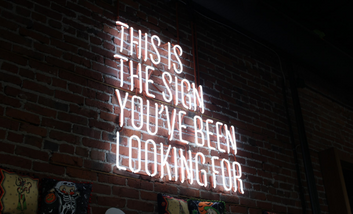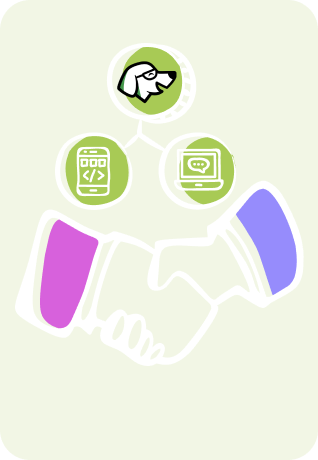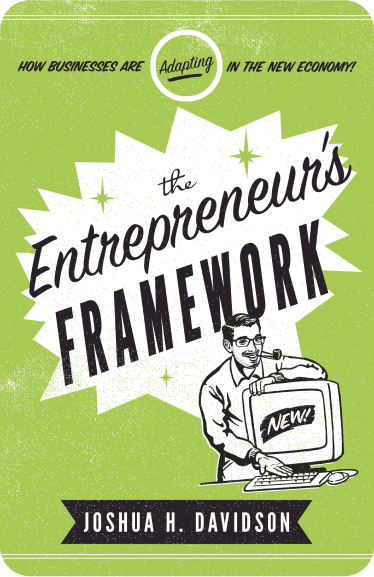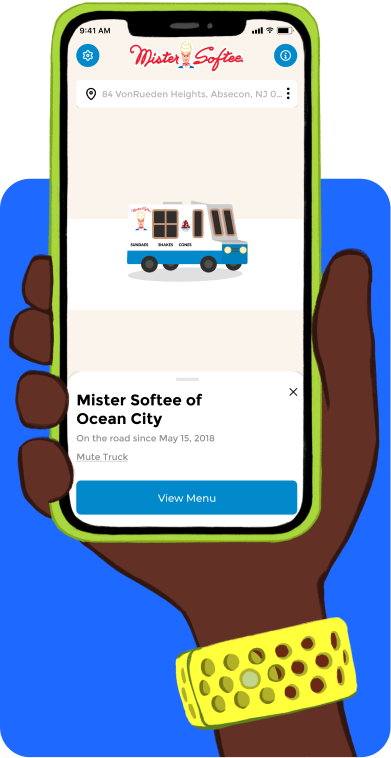Powerful brands are actually individuals with their own unique personalities.
If they weren’t, no one would be able to tell them apart from a line of products and services offering the same thing. This goes further than just relatability, tapping into our collective subconscious by mirroring our shared human needs.
It helps us as business operators and marketers to create consumer connections that are practically instinctual.
In 1954, Carl Jung described this phenomenon as ‘archetypes.’ These can be observed repeating across cultures and generations over the decades, helping to shape our collective human experience. From historical figures, celebrities and some of your favorite movies in Hollywood — to all across the literary pages, archetypes can be seen in our most beloved (and bemoaned) personas.
Archetypes are essentially the heart of a brand in the eyes of the consumer, conveying meaning that makes customers relate to them as if they actually were alive in some way.
In this post, we’ll explore the Everyman archetype and its different sub-archetypes.
Let’s dive in!
Brand Yearning to Connect with the World
While all brands seek to connect on some level with consumers, these archetypes like to take things to the next level.
Whether through inspiring a sense of belonging, enjoyment and intimacy, connection is the name of the game.
In real life, you might refer to them as your Average Joe or The Girl Nextdoor. In business, they are wholesome, genuine, and almost irresistibly likable.
Here are some examples of companies with everyman-style brands.
– Budweiser
– Discover
– KitKat
This type of branding is typically seen in products that are meant to have a casual mass appeal, so that absolutely anyone can enjoy them. That’s why it’s so prominent in products like beer and candy.
With no need for pretense or status symbols, the Everyman tends to embody the ideals of hard work, honesty, and integrity. Simply just being an ‘Average Joe.’
Embracing common sense values and authenticity feels relatable to everyone.
Marketing to the People: The Everyman Archetype Family
The Everyman archetype can be viewed from a few different angles, depending on which specific attributes are at play.
The Everyman
No frills. Without pretense, the Everyman is sincere and genuine. Seeking always to belong and get along with others, the Everyman appeals to everyone by treating everyone with dignity and respect.
However, in an effort to not ruffle feathers, the Everyman may succumb to a herd mentality and risk losing its own identity.
Real word Example: GM is currently marketing electric vehicles with the slogan “Everybody in.”
This simple and effective slogan highlights the complete inclusion that is a part of Everyman branding.
The Citizen
With a deep-rooted responsibility to the community, the Citizen believes there to be great value in helping the collective whole.
With high integrity, the Citizen works for fairness and equality. These values are generally universally recognized to be positives.
However, the challenge for the Citizen archetype is not come across as overly zealous. If the branding seems self-righteous, rather than righteous, it can alienate people.
Real-world example: The branding of Habitat for Humanity. Their call to action on their donation page begins:
Help build strength and stability.
This shows that when you donate to them to help them build houses for those in need, you are doing much more than building houses. It calls on you to take positive action and be a good citizen in a community.
The Advocate
The Advocate is compelled to work for the greater good on behalf of others. With passion and energy, they’re able to motivate and inspire others to action while uniting individuals behind a shared cause.
The Advocate should be careful, however, to never let personal gain take precedence over the greater good. This can come across as disingenuine, especially in branding.
This can be a riskier branding decision. When a person or institution takes this brand identity, consumers will often hold them to a higher standard. If your brand and actions do not genuinely align, it is possibly only a matter of time before the public figures it out.
This means that if any mistakes are made, businesses branded in this way risk losing the community they have built.
Real-world example: Mind Body Green.
They embrace an advocate branding aspect with a section of their website dedicated to Social Good.
Servant
Ever-committed to helping others, whether in a subservient role, or as a leader [a servant leader even], Servants lead with empathy, awareness, and focused commitment, and they ask for no reward for serving others.
They strive to attract other everyday individuals to help make a difference. This can, however, read as a weakness, depending on its positioning.
Many businesses and organizations embrace this archetype successfully in their branding.
Real-world example: The Peace Corps. Their about page reads:
The Peace Corps is a service opportunity for motivated changemakers to immerse themselves in a community abroad, working side by side with local leaders to tackle the most pressing challenges of our generation.
The Networker
The Networker creates communities and connections meant to benefit the whole.
With a naturally outgoing nature, the Networker tends to be a social butterfly, friendly and relatable.
The challenge this sub archetype may face is the temptation to manipulate connections for personal gain. Again, you want your brand to come across as if you are facilitating natural connections, not simply trying to exploit them.
Real-world Example: LinkedIn.
Think about it, have you ever heard anyone complain about LinkedIn?
Studies and investigations have been conducted around the world about the harm of Meta’s products. People are leaving Twitter en masse as a result of Elon Musk’s changes.
LinkedIn has minimal branding but truly serves its purpose. If you are offering something of genuine utility, it may be worthwhile to follow LinkedIn’s example.
Establishing A Brand Voice: A Look at Marketing for Everyman Brands
Marketing feels like looking in a mirror for the everyday consumer. It can give them a sense of belonging. Marketing draws on the human desire for equality and the connection that comes from what feels like mutual understanding and similarity.
This can come from thoughtful brand messaging, which often includes:
– Scenes from everyday life, like family culture
– Warm, inviting and wholesome imagery
– Colloquial brand voice
– Money-back guarantees and other trust-building elements are common
Aesthetics can play a key role in this. Check out our post on color theory in app design if you want to get deeper into the art of choosing colors to help craft your brand.
The rules of color theory are universal. Here are some common brand colors and what these colors are associated with:
– Blue: Strength, Competence, High Quality, Dependable, Trust, Tranquility, Peace, Integrity, Intelligence, Security, Balance, Calm, Safety, Committed
– Red: Love, Power, Excitement, Boldness, Youthful, Passion, Energy, Heat, Strength, Desire, Sensuality, Intensity, Speed
– Brown/ Tan: Rugged, Earth, Outdoors, Longevity, Dependable, Comfort, Strength, Modesty, Independence
From color palettes to typography and imagery, honing in on your brand’s ‘voice’ will both guide and inform all of your decisions when it comes to messaging and presentation.
The Evolution of Everyman Brands

There are different levels to be achieved in a given archetype. This depends on the strength of the displayed persona, and the brand’s evolution.
The general rule of thumb is, the higher level attained, the more success and wider net that can be cast to attract consumers.
Level 1: The Everyman archetype is expressed through seeking any sort of affiliation, typically spurred by feelings of loneliness.
Level 2: One learns how to connect (form and nurture relationships) and fit in.
Level 3: The dignity afforded each person, regardless of differences, is realized and practiced.
However, while the Everyman archetype can be incredibly effective, it will not be effective if it doesn’t actually suit your brand.
Is Your Brand An Everyman?
If this post resonates with you and your company’s mission and values, it’s entirely possible!
Many brands possess archetypal qualities within their messaging that they’re often entirely unaware of. Awareness of this is a core part of establishing a brand voice.
This is because brand storytelling is far from a new art form, but it is more and more essential to achieve success in a highly competitive marketplace.
So, learn it. Know where your brand falls in this spectrum. And use it to establish marketing guidelines and company operations at a cultural level.
To start, ask yourself these questions:
-Which archetype do your competitors most resemble?
– Which archetypes do your customers resemble?
– What drives them (customers and competitors)?
– How can your brand do things differently amongst your competitors?
– What role does your brand play in customers’ lives?
Then, look within:
– What is your team culture like? (their personalities, interests, etc.)
– What motivates team members to come in for work?
– What are your company values?
These are great places to start!
Final Thoughts on the Everyman Archetype and Establishing a Brand Voice
If this archetype does not resonate with you, there is likely another one out there that will!
We will publish an entire series exploring the different archetypes when it comes to brand creation, so stay tuned!
What do you think? Comment below.
Since 2009, we have helped create 350+ next-generation apps for startups, Fortune 500s, growing businesses, and non-profits from around the globe. Think Partner, Not Agency.
Find us on social at #MakeItApp’n®

















